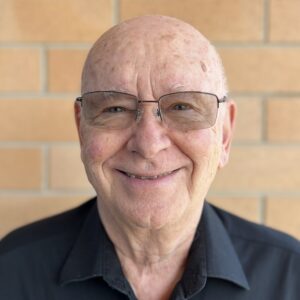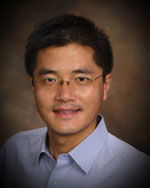String theorist Jakob Moritz joined the faculty as an assistant professor of physics on January 1, 2025. He joins us from CERN where he has been a postdoc for just over a year. Previously, he was a postdoc for four years at Cornell University, and before that, he earned his PhD from the University of Hamburg and DESY.
Please give a general overview of your research.
I work on string theory, a theoretical framework for quantum gravity. It is the only known approach that consistently combines quantum mechanics and Einstein’s theory of gravity. Physicists have struggled for decades to reconcile these two fundamental theories, and string theory achieves this unification. Sometimes called “the theory of everything,” string theory addresses physical phenomena at arbitrarily high energies. While the nickname may sound a bit grandiose, it highlights the theory’s incredible scope.
However, while the field equations of string theory have solutions that are relatively easy to study, these don’t resemble our universe. My research focuses on going beyond these “easy” solutions to find ones that better match the universe we observe. By doing so, I aim to uncover insights into the origins of the peculiar laws of physics governing our universe.
Something that I find particularly interesting is dimensionless constants of nature. These constants are significant because they are independent of a choice of units. For example, the ratio of the electron’s mass to the top quark’s mass is a dimensionless number — about 0.000003, which is remarkably small! There are many such constants whose values are determined experimentally, yet we lack a theoretical explanation for them.
In the early 20th century, particle physicists didn’t focus much on questions like, “Why are the constants of nature what they are, and not something else?” But with string theory, we can begin to address this. My work seeks to identify solutions of string theory in which these numbers align with experimental values. Another well-known example is the energy density of the vacuum, or dark energy. Despite being the dominant energy source in the universe today, dark energy is extraordinarily small in natural units — just 10^{-120} when compared to the natural energy scale of quantum gravity. This discrepancy, known as the cosmological constant problem, is something I find deeply intriguing. How can such a small value arise? Why isn’t it zero? Similarly, why is the Higgs mass so small? These are the kinds of profound questions I aim to explore through string theory.
What are one or two main projects you’ll have new group members work on?
One major project will involve finding the Standard Model of particle physics within string theory. This is something I am already working on, but having more hands on deck would be invaluable. The goal is to “engineer” realistic laws of particle physics — either the Standard Model or something close to it — as solutions of string theory. This work is crucial for addressing the electroweak hierarchy problem: why is the Higgs mass so unnaturally small? Currently, no one has a clear explanation for this.
Technically, this involves a lot of geometry. String theory predicts the existence of extra dimensions, which are both a blessing and a curse. They must be small enough to have remained unobservable, yet they also determine the physical laws we experience at larger scales. Much of our work will focus on understanding these geometries — particularly how certain objects, called branes, wrap around features like circles in these spaces — and calculating the resulting physical laws.
What attracted you to Madison and the university?
I really appreciate the breadth of the theory department here. String theory is a vast field, encompassing topics that range from almost pure mathematics to particle phenomenology. Because my work leans toward the phenomenological side, it intersects with many other areas of theoretical physics, including cosmology, particle physics, and applied mathematics. Being at a large place like Madison, with its diverse and talented faculty, is incredibly exciting.
Additionally, I know that Madison attracts outstanding students who are eager to work on string theory and particle physics. That’s something I’m looking forward to as well!
What is your favorite element and or elementary particle?
Neutrinos are cool because they’re almost massless. For a long time, they were thought to have zero mass, as predicted by the Standard Model of particle physics. But experiment has revealed otherwise! This discovery hints strongly at new physics at high energies.
What hobbies and interests do you have?
I love music! I play piano and guitar, and music is a big part of my life, especially since my partner is also a musician. I also enjoy sailing. While at Cornell, I spent summers sailing and participated in weekly competitive races, which were incredibly fun. I know that sailing is also a thing here — I look forward to getting back on the water!


